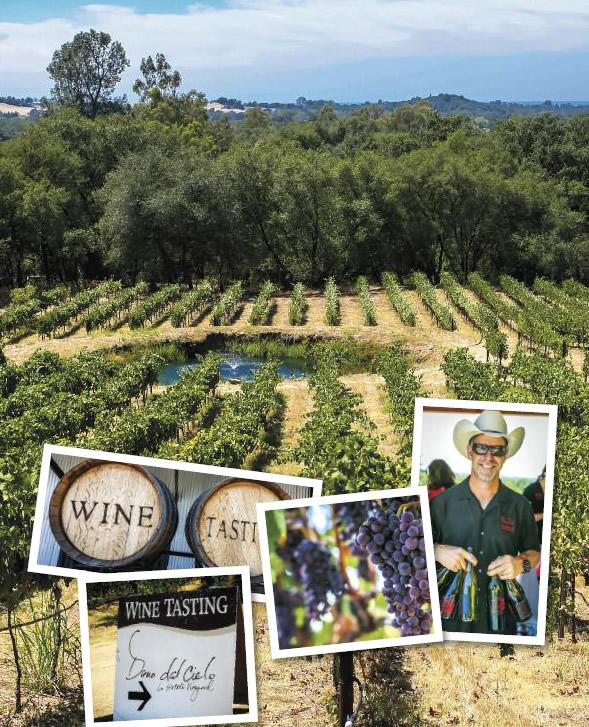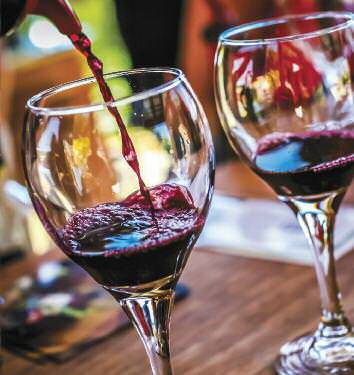edible travel
CITRUS CELEBRATION
Placer County growers produce sweet mountain mandarins.
WRITTEN BY MARNIE MCARTHUR
PHOTOS BY JACI GOODMAN AND COURTESY OF MOUNTAIN MANDARIN FESTIVAL
There is a lot to love about mandarins — sweet and juicy, seedless, and easy to peel. But all mandarins are not created equal. If your benchmark is commercial Cuties®, taste the difference with mountain-grown mandarins from Placer County.
Even though citrus doesn’t grow well in Reno-Tahoe, you can take a quick trip over the hill from late October through March to discover tree-ripened mandarins at small farms and farm stands, sold by the farmers who grow them. Or find the sweet treats at the Mountain Mandarin Festival at Gold Country Fairgrounds in Auburn, Calif., Nov. 22 – 24 this year.
Growing and Harvesting
Small microclimates and complex soils in the Sierra foothills produce mandarins with different tastes depending on the location. More than a dozen microclimates span a five-mile stretch along the Highway 80 corridor from Penryn and Loomis to the south, to Lincoln and Newcastle to the north.
“The most plentiful mandarin variety in Placer County is the cold-tolerant Owari Satsuma,” says Placer County Agricultural Commissioner Josh Huntsinger. “More than 1,000 tons are harvested from mid-November through January.”
“Many farmers have planted less cold-tolerant varieties such as Clementine and Golden Nugget that extend the season into February and March,” explains Rich Colwell, owner of Thundering Herd Ranch and president of the Mountain Mandarin Growers Association.
Local history
Mandarins originated in China. They were taken to India by traders and later spread to Japan, where the Satsuma variety was developed. They were first imported into the Mediterranean region through the port of Tangiers and called tangerines. The original Clementine mandarin was developed by Father Clement Rodier, a French missionary in Algeria, in the early 20th century.
In other words, a mandarin is a mandarin, and so is a Clementine and a tangerine.
Welsh settlers planted the first mandarin trees in Placer County in the 1880s. Tom Aguilar’s family was one of the first three to farm the Penryn area in 1943. Today his Mandarin Hill Orchards has 20 acres of Satsuma mandarins and Algerian Clementines, including 10 trees from the 1880s that still bear beautiful fruit.
To Your Health
The next time you have a stuffy nose, eat a mountain mandarin. In 2008, USDA officials tested mandarins from 10 different microclimates in Placer County. In the study it was noted that 10 ounces of Placer County Owari Satsuma mandarin juice contains as much synephrine as one regular Sudafed® decongestant. And they taste good, too!
“Our mandarins ripen on the tree and are picked by hand only when ready, so you get the sweetest, most nutritious fruit possible,” Aguilar says. “Large growers of Cuties® pick an entire orchard at one time. Some of the fruit is ripe and some is not. Green fruit is turned orange with natural ethylene gas. This is not harmful for consumers, but it does not increase sugars to create a sweet fruit.”
Mountain mandarins are grown on small family farms ranging from two to 20 acres by 60 registered growers. Four are certified organic and many others are pesticide free and natural in practice.
Organic Growers
On Brenner Ranch in Newcastle, Karen and Jim Brenner are typical of many small growers. They farm Satsuma mandarins, along with other fruits, including kiwi, blueberries, blackberries, and peaches, controlling pests with tiny beneficial wasps and plant-based oil spray.
Rich Ferreira of Side Hill Citrus doesn’t see much of a pest problem for his Satsuma mandarin trees in Lincoln.
“We don’t have the bugs other areas have,” Ferreira says. “Our area has high altitude and low humidity with hot, dry summers, and breezes in winter. Plus we have beneficial insects that eat most of the pests.”
Ferreira’s farm produces about 200,000 pounds of mandarins, which he sells through farmers’ markets and at the annual Mountain Mandarin Festival in Auburn.

Party Time
Always the weekend before Thanksgiving, the Mountain Mandarin Festival features fruit from 18 to 20 growers plus live music, crafts, jewelry, body-care products, and gourmet foods from more than 200 vendors.
Festival Marketing Director Karen Spencer explains that each vendor must have at least one mandarin menu item.
“Be prepared for a taste extravaganza,” Spencer says, “everything from mandarin olive oil and barbecue sauce to mandarin wine, fudge, and pizza!”
Details about the festival, a list of growers, farm map, and information for planning your visit to many mountain mandarin orchards are available at Mandarinfestival.com.
Aguilar speaks for all proud Placer County growers when he says: “Our family-owned and operated orchards are located in the beautiful Sierra foothills. Come and visit us. It’s more than just the mandarins … it’s the people who grow them.”
For Reno freelance writer Marnie McArthur, buying bags of mandarins in Newcastle is the highlight of fall and winter drives to see family in the Bay Area. Her grandkids eagerly open the bags, and 18-month-old Isaac says his first full sentence: “More mandarin, please!”
20th Annual Mountain Mandarin Festival
Nov. 22 – 24
Gold Country Fairgrounds, 1273 High St., Auburn, Calif.
For details, call 916-663-1918 or visit www.Mandarinfestival.com


